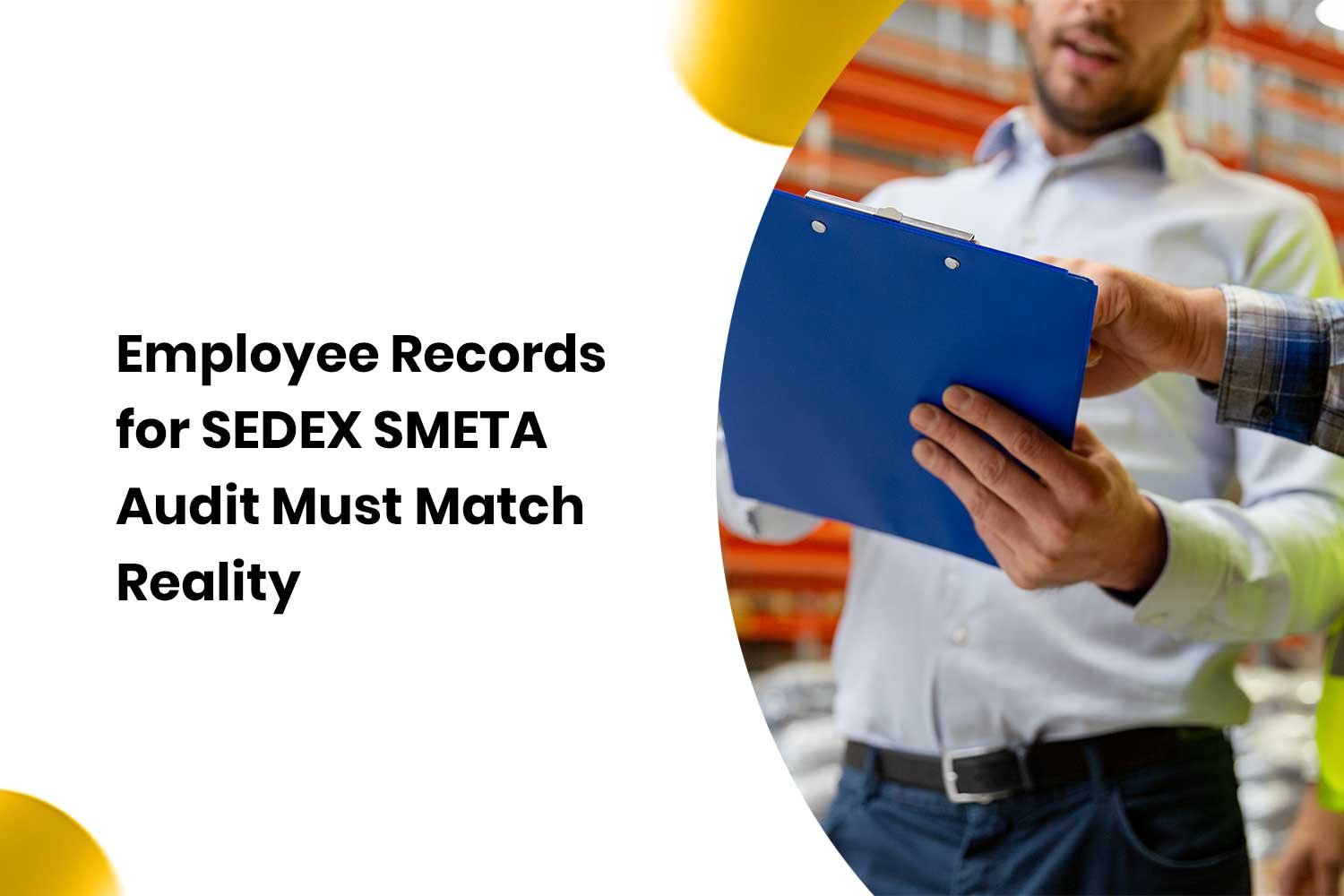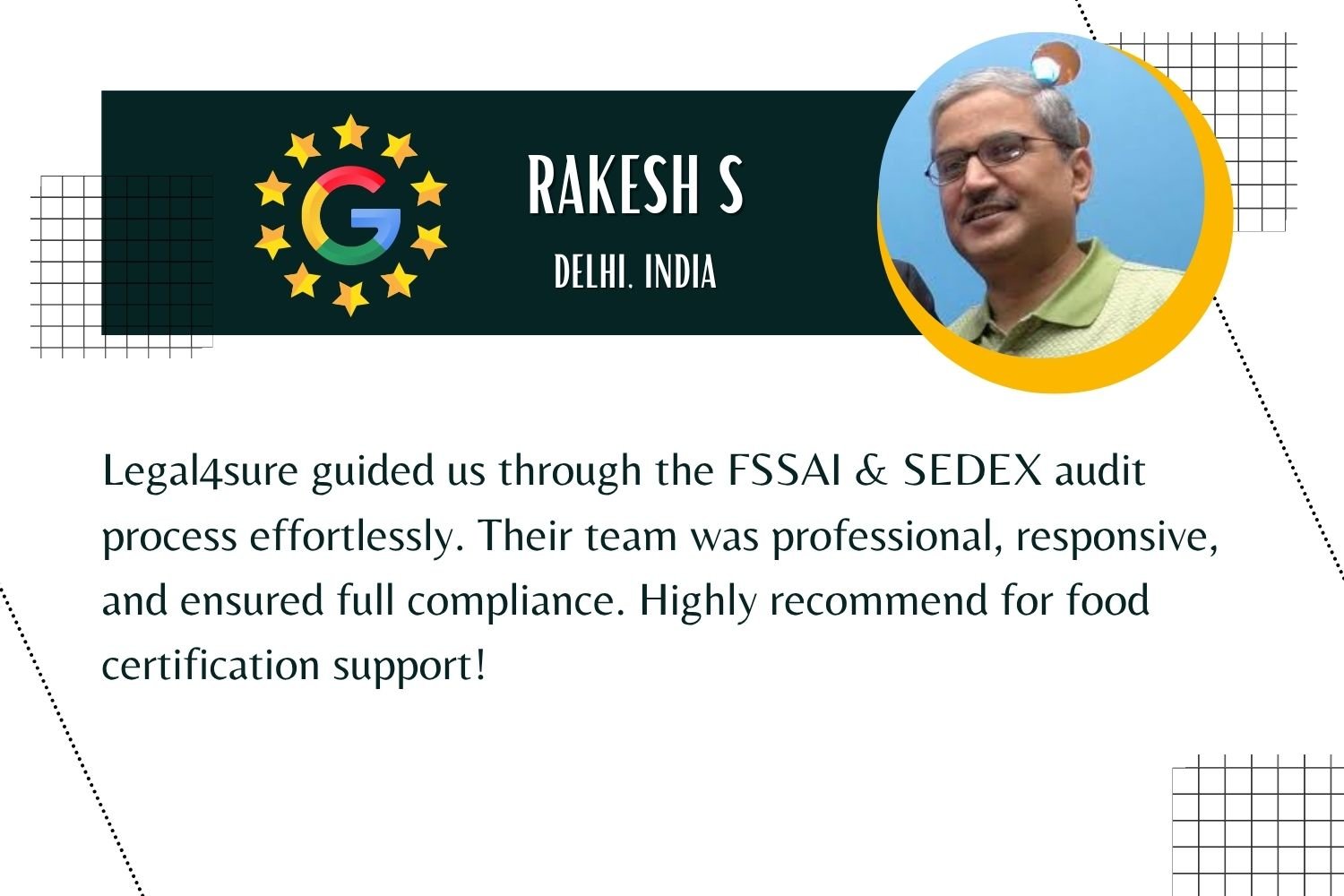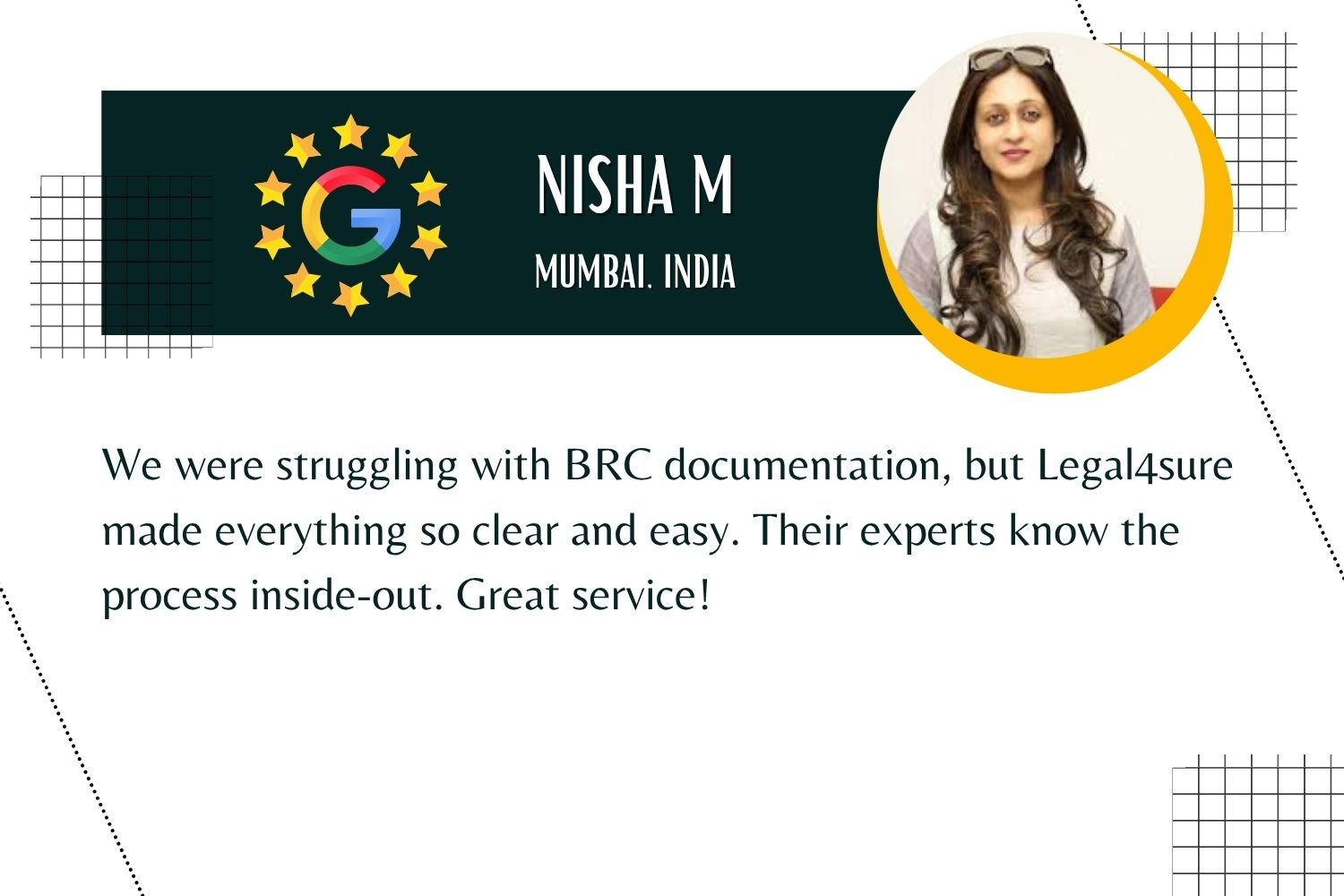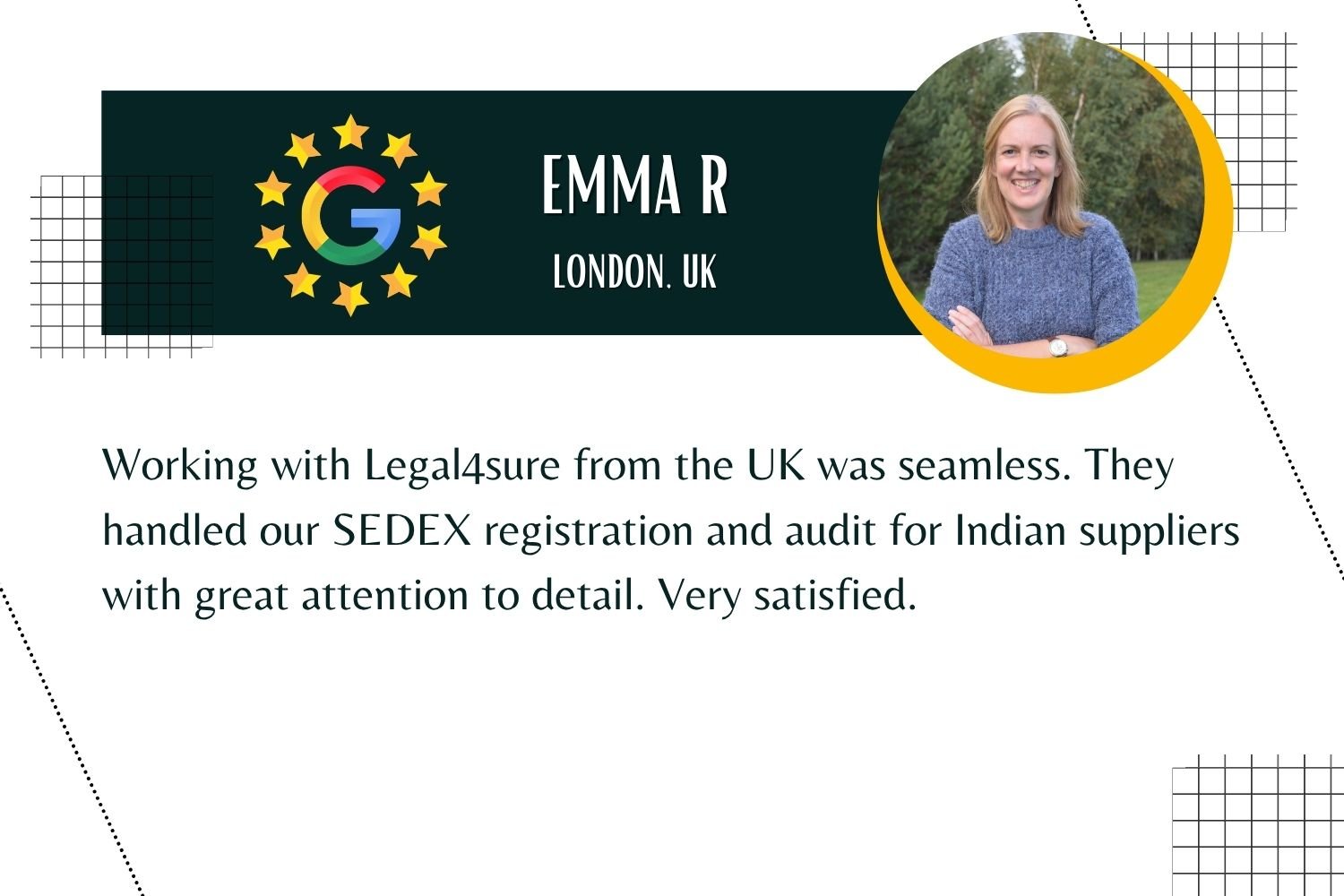When passing a SEDEX SMETA 4-pillar audit, your HR files are essential. Auditors examine records closely, seeking trends, traceability, and proof that your business treats its employees fairly. A bad message is sent if your HR files are disorganized, out-of-date, or missing important papers. Proper employee documentation is not about satisfying an auditor. It’s about showing that your workplace is ethical, legal, and ready for global buyers. So what exactly goes into the HR files required in a SEDEX audit? Let’s break it down step by step, with real factory examples, formats, and SOPs you can use.
SEDEX HR File Checklist for Factories
SEDEX audits require a clear paper trail for each employee. There should be no gaps in documentation from hiring to departure.
Here’s what most auditors look for:
- Signed appointment letters and offer letters.
- Updated ID proofs (like Aadhaar or Voter ID).
- Proof of age (birth certificate, school certificate).
- PF and ESI numbers (or a declaration if not applicable).
- Payslips for the last 3 to 6 months.
- Attendance records that match wage sheets.
- Leave records (including casual leave, sick leave, and earned leave).
- Records of grievance handling or disciplinary actions (if applicable).
Using a consistent HR file format is a key part of managing the HR files required in a SEDEX audit. To speed up SEDEX compliance in India, avoid scattered documents. Organize everything in folders by employee ID or name, whether physical or digital.
Pro tip: Don’t just prepare for full-time staff. Include records for contract workers, daily wage workers, and migrants as well.
Employee Records for SEDEX SMETA Audit Must Match Reality
Employee records for SEDEX SMETA audit. Auditors do not just sit in a room flipping through files. They often:
- Cross-check file data with interviews on the factory floor.
- Match age documents with the worker’s appearance.
- Ask line supervisors about leave records.
If your records say one thing but reality says another, that raises a concern. For example, if documents show 8-hour shifts but workers claim they regularly work 12 hours without overtime pay, that’s a significant problem.
To avoid this:
- Train floor staff to answer questions confidently.
- Synchronize time records with biometric data.
- Conduct internal HR audits every quarter.
This is where preparing the HR files required in a SEDEX audit pays off. It is not just paperwork. It directly impacts how your factory is seen by buyers and auditors.
Factory HR SOPs for SEDEX Compliance
Standard Operating Procedures (SOPs) demonstrate that your HR team knows the processes and follows them.
Key SOPs include:
- Hiring SOP — Selection, verification, and onboarding processes.
- Resignation and Exit SOP — Final settlement, full & final payment, experience letter.
- Leave Management SOP — Request process, approval, and carry-forward policy.
- Wage & Overtime SOP — Payment cycle, OT calculation, and deductions.
- Grievance SOP — Reporting issues without fear.
“If you do not have written SOPs, now is the time to create them. These are not just helpful for audits; they are crucial for a smooth and well-managed operation. Strong factory HR SOPs for SEDEX compliance support the HR files required in a SEDEX audit and can make the difference between passing and failing.
HR Policies Required in SEDEX Audit
Auditors expect written HR policies instead of just verbal instructions. These policies show that you have systems to protect your workforce.
Key policies include:
- Anti-harassment and anti-discrimination policy.
- Equal opportunity employment.
- Working hours and overtime policy.
- Policy on child labor and young workers.
- Policy on freedom of association (unions, worker committees).
- Disciplinary action policy.
These should be:
- Written in the local language and English.
- Displayed on the notice board.
- Signed by the factory head and HR.
If you need to know which HR documents are needed for a SEDEX SMETA audit, start by gathering your signed policies. Auditors will want proof that the policies are known, shared, and followed.
Checklist of Employee Files for SEDEX 4-Pillar Audit
Checklist of employee files for SEDEX 4-pillar audit, for each worker in your factory, your HR file should include:
- Employment contract or appointment letter.
- Age and ID proof.
- Wage, overtime, and payslip records.
- Leave and attendance sheets.
- Social security (PF/ESI) details.
- Disciplinary action or warning letters.
- Any training certificates (fire safety, machine use).
This is your working SEDEX HR file checklist for factories. The stronger your documentation, the smoother your audit will go.
Auditors also review how files are maintained:
- Are they updated monthly?
- Are files secure yet accessible?
- Do HR staff know what’s in each file?
Do not rely on memory. Use formats and templates that work.
Read more: Differences Between SMETA Audit And Sedex Certification
Factory Worker Records Should Reflect Real Conditions
A common audit issue is the mismatch between factory worker records and what workers actually say. That poses a significant risk.
For example:
- The record shows a worker is 18, but she looks 14.
- The record states that a worker receives PF, but he claims the money goes to the contractor.
- The record indicates a worker has days off, but they say they work Sundays too.
This is why keeping accurate factory worker records is not just about meeting SEDEX requirements. It proves that your workplace runs fairly and responsibly. What this really means is that the HR files required in a SEDEX audit only matter if they reflect what is truly happening on your factory floor.
HR audit preparation for SEDEX
Do not wait until a week before the audit to begin preparations. Best practices for HR audit preparation for SEDEX include:
- Assign one HR point person for the audit.
- Create a digital tracker for missing documents.
- Review 10% of files internally every month.
- Resolve inconsistencies between attendance and wages.
- Train HR and supervisors on SEDEX questions.
Creating a checklist linked to your factory’s HR file format for SEDEX compliance in India can save time, build confidence, and reduce errors. Additionally, prepare an HR summary sheet that includes total workforce size, gender breakdown, contract versus permanent ratio, and so on. Auditors ask for this information early in the process.
Get SEDEX Audit-Ready with Expert HR File Support
The HR files required in a SEDEX audit are more than just documents. They are proof that your factory runs fairly and transparently. At Legal4sure, we do not just help you pass the audit. We help you build real systems, structured HR files, clear SOPs, and records that stand up to buyer scrutiny. Start with one department. Fix the gaps. Train your people. When the audit team arrives, you will be ready with confidence. Connect with Legal4sure today and make your HR files audit-ready from day one.
FAQs
Q1. What HR documents are required for a SEDEX SMETA audit?
Appointment letters, ID proofs, age verification, payslips, PF/ESI details, attendance, leave records, grievance, and training records are essential.
Q2. What is the best HR file format for SEDEX compliance in India?
Use folders (either physical or digital) organized by employee ID or name, with a consistent format for contracts, payslips, and ID documents.
Q3. Are SOPs mandatory in a SEDEX HR file audit?
They are not mandatory, but without clear SOPs, inconsistencies may arise. SOPs help ensure consistency and prevent errors in documentation.
Q4. How often should factories review their HR records?
Monthly internal reviews are ideal. At a minimum, conduct a quarterly audit of 10–20% of files.
Q5. What happens if some HR files are incomplete during the audit?
Minor gaps may be acceptable with a corrective action plan. However, repeated or critical gaps can lead to non-compliance or audit failure.













